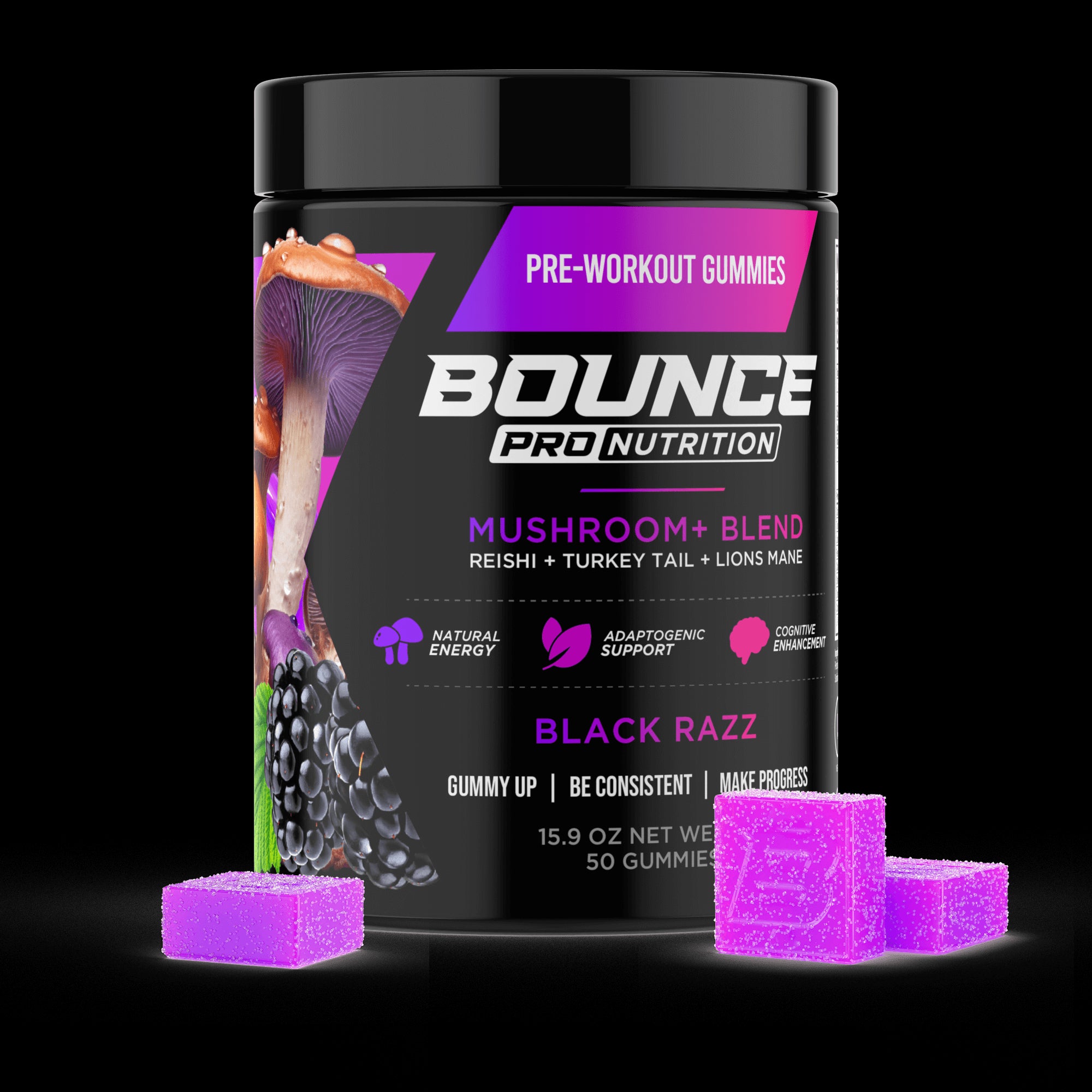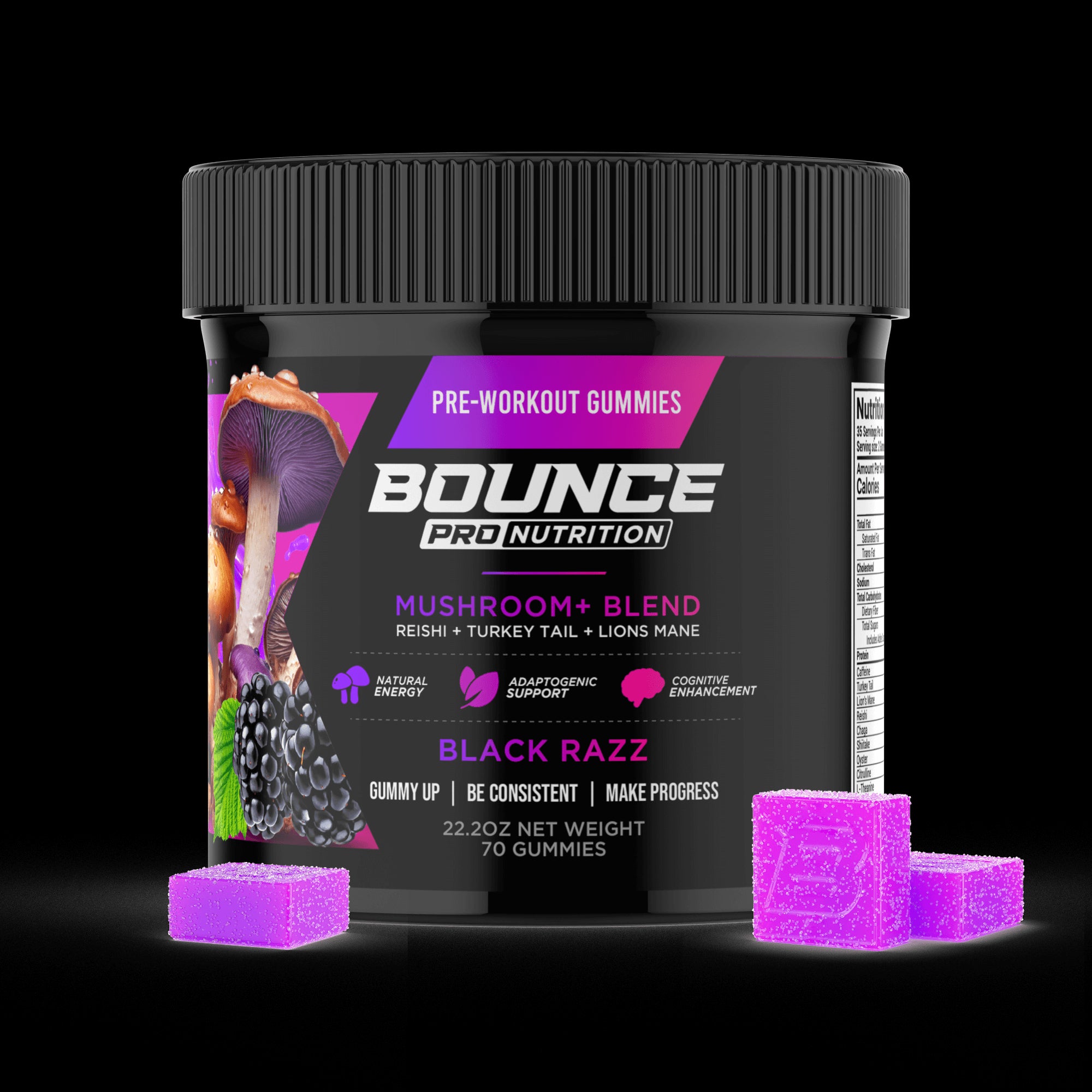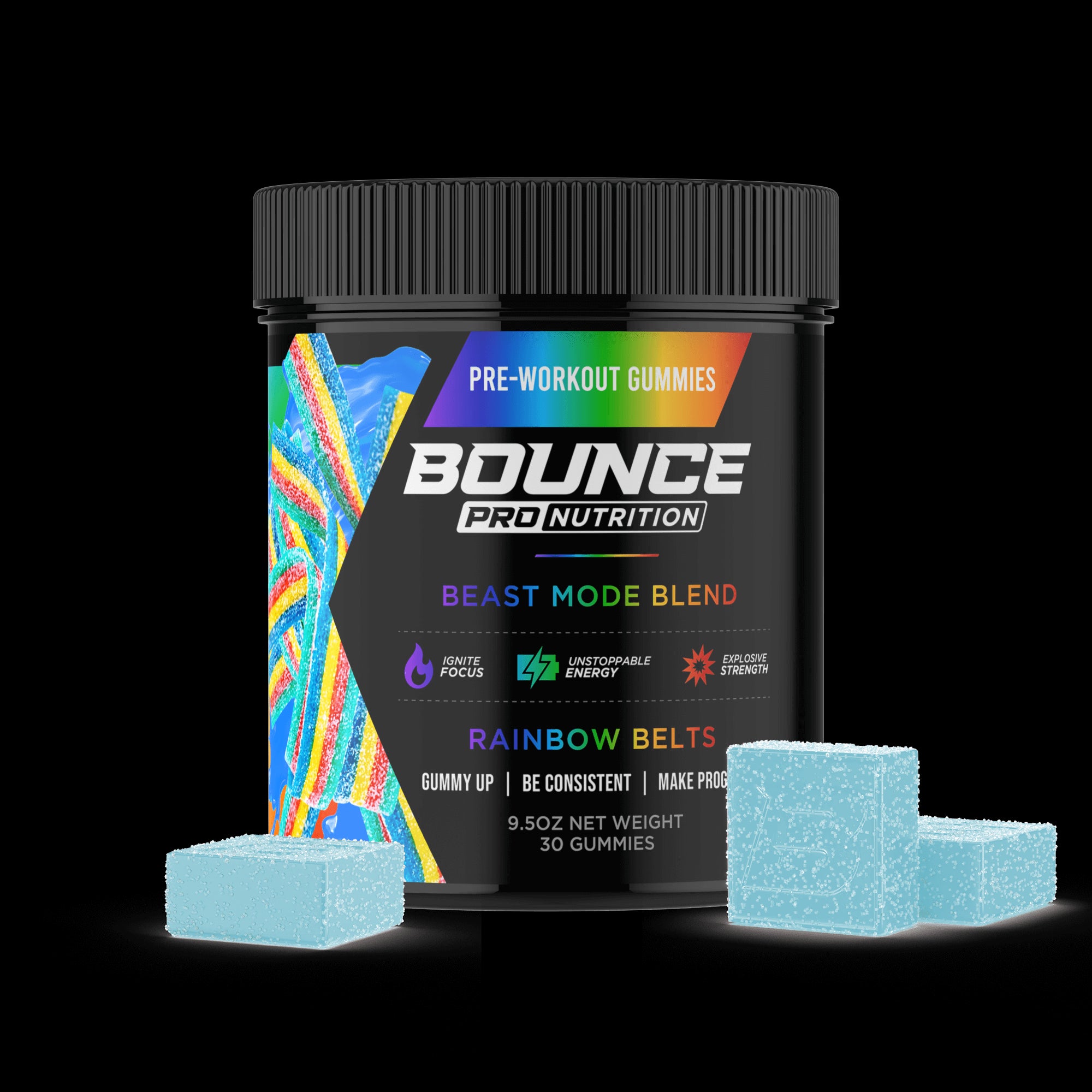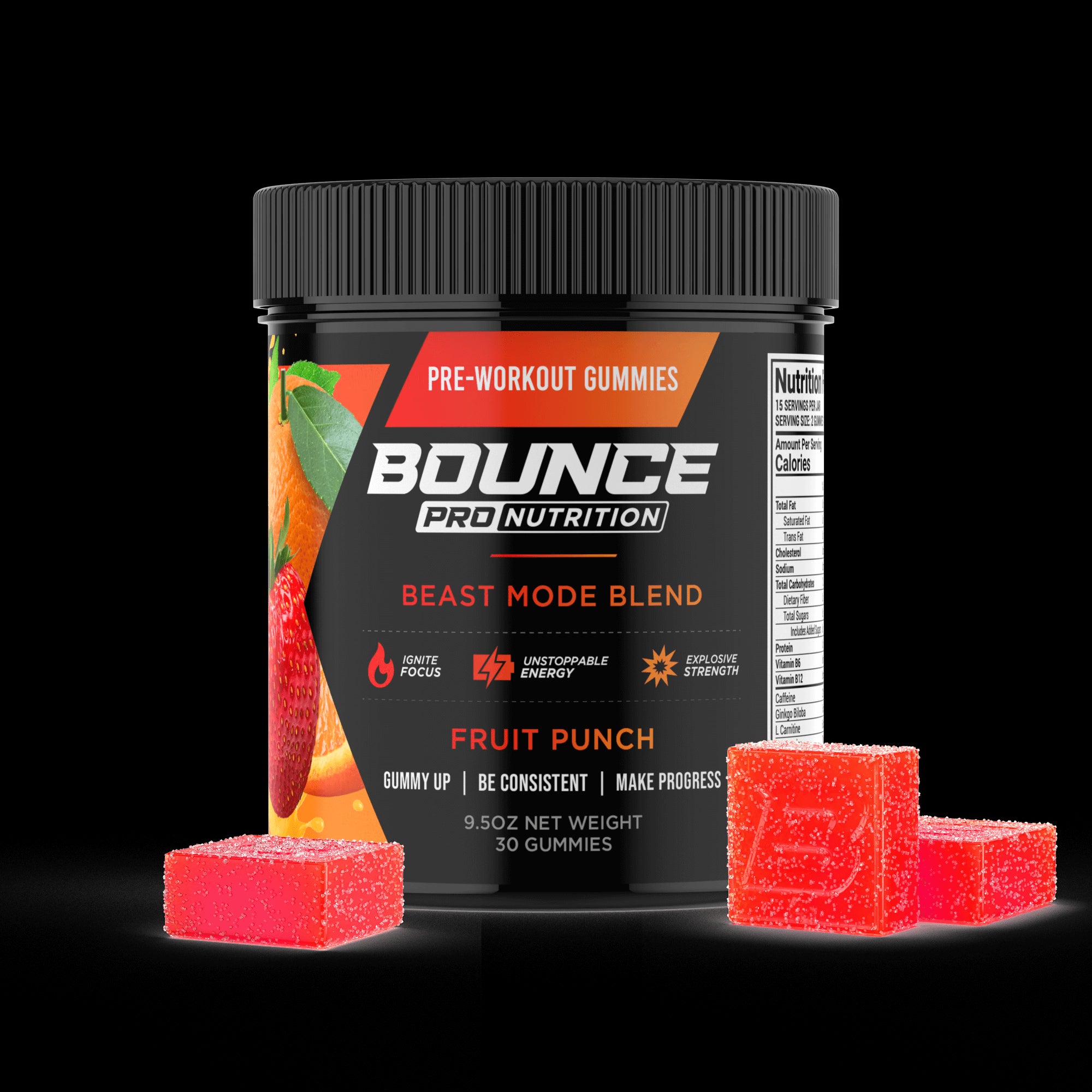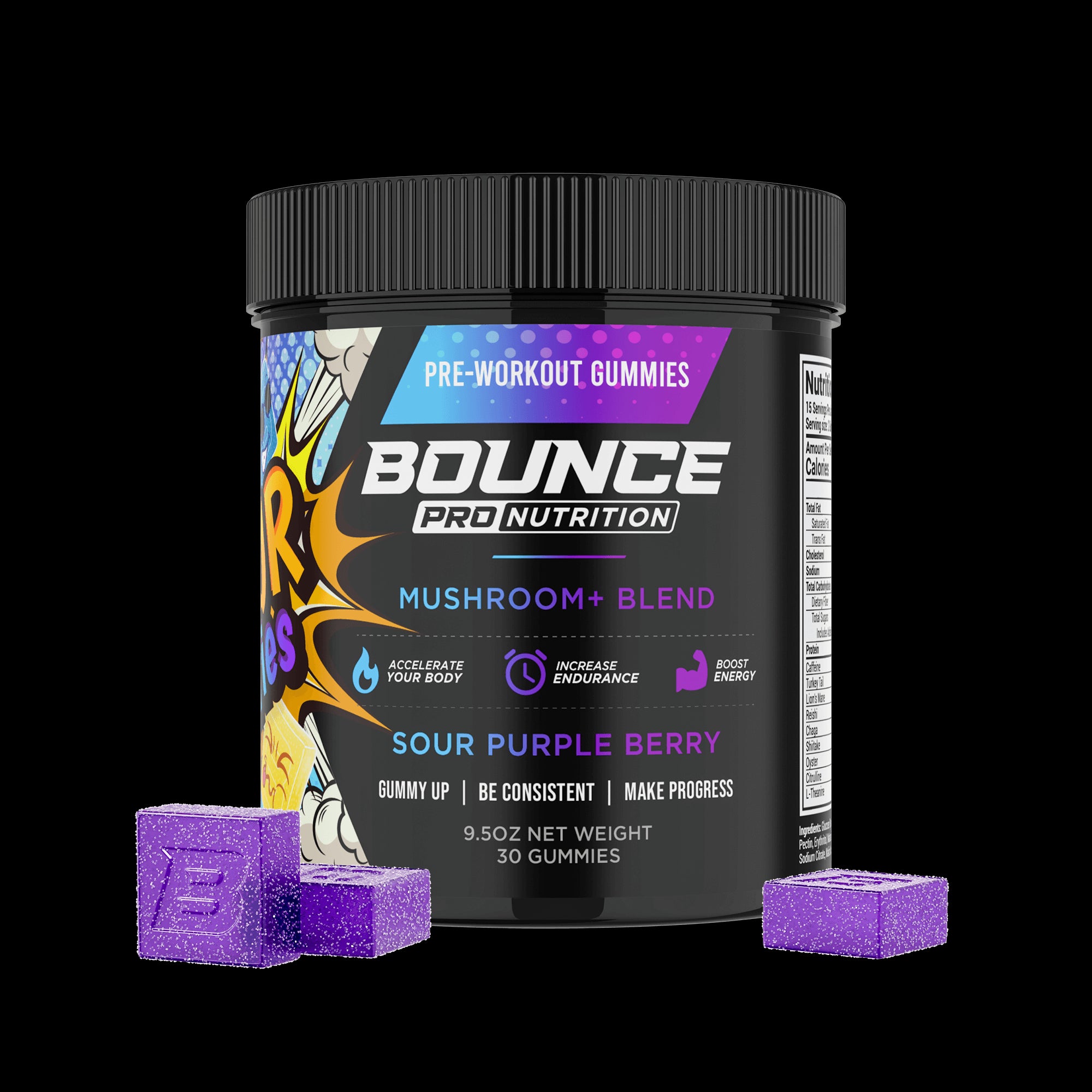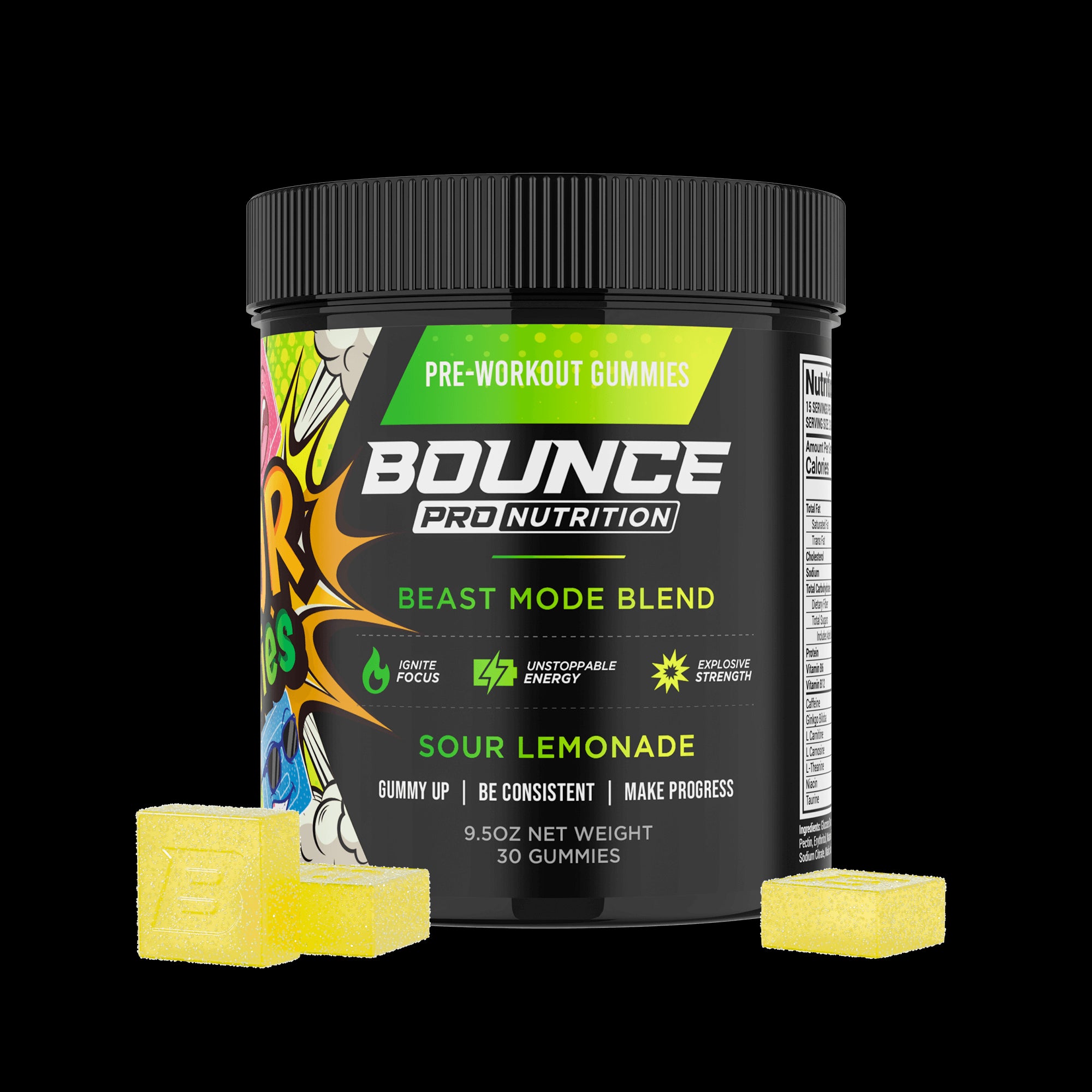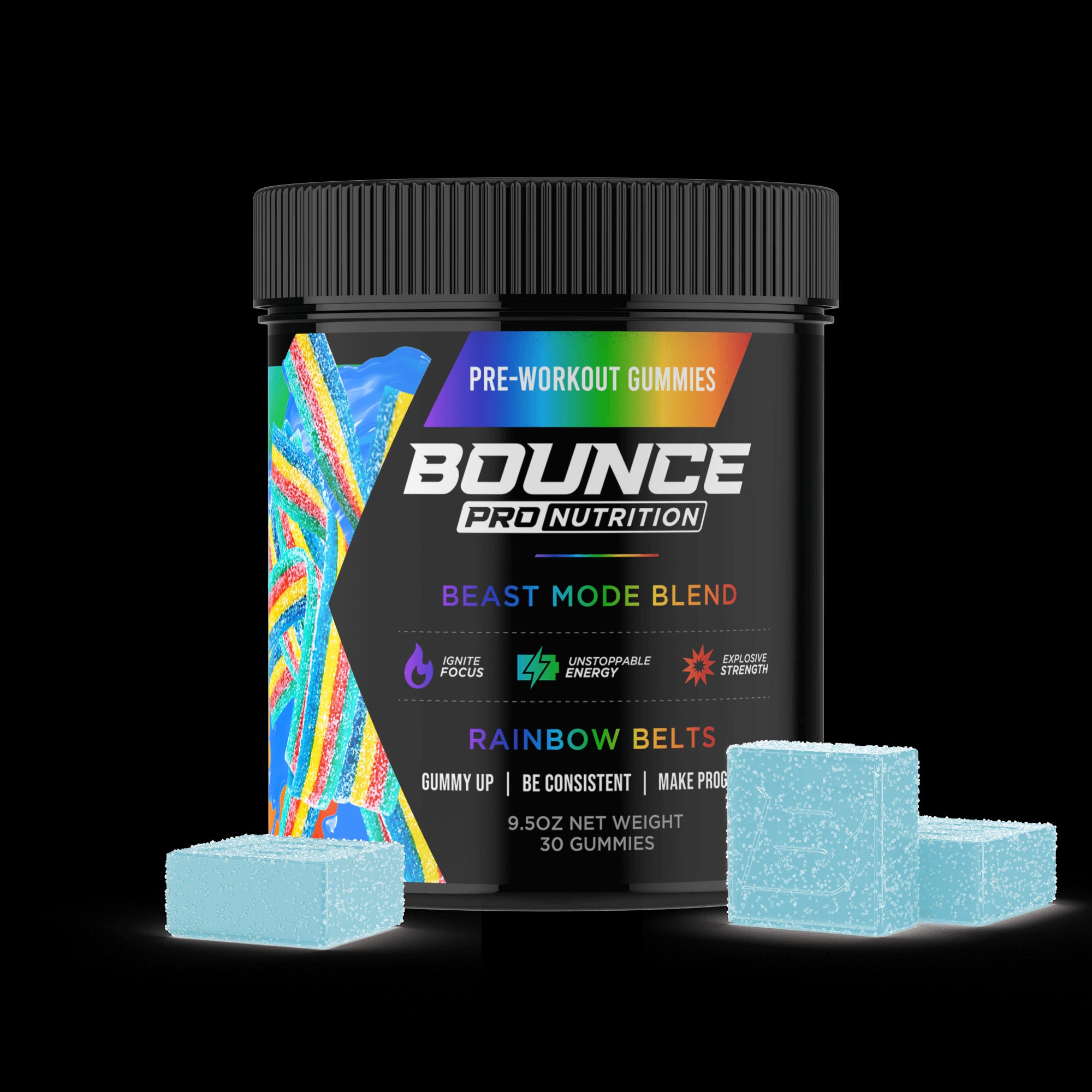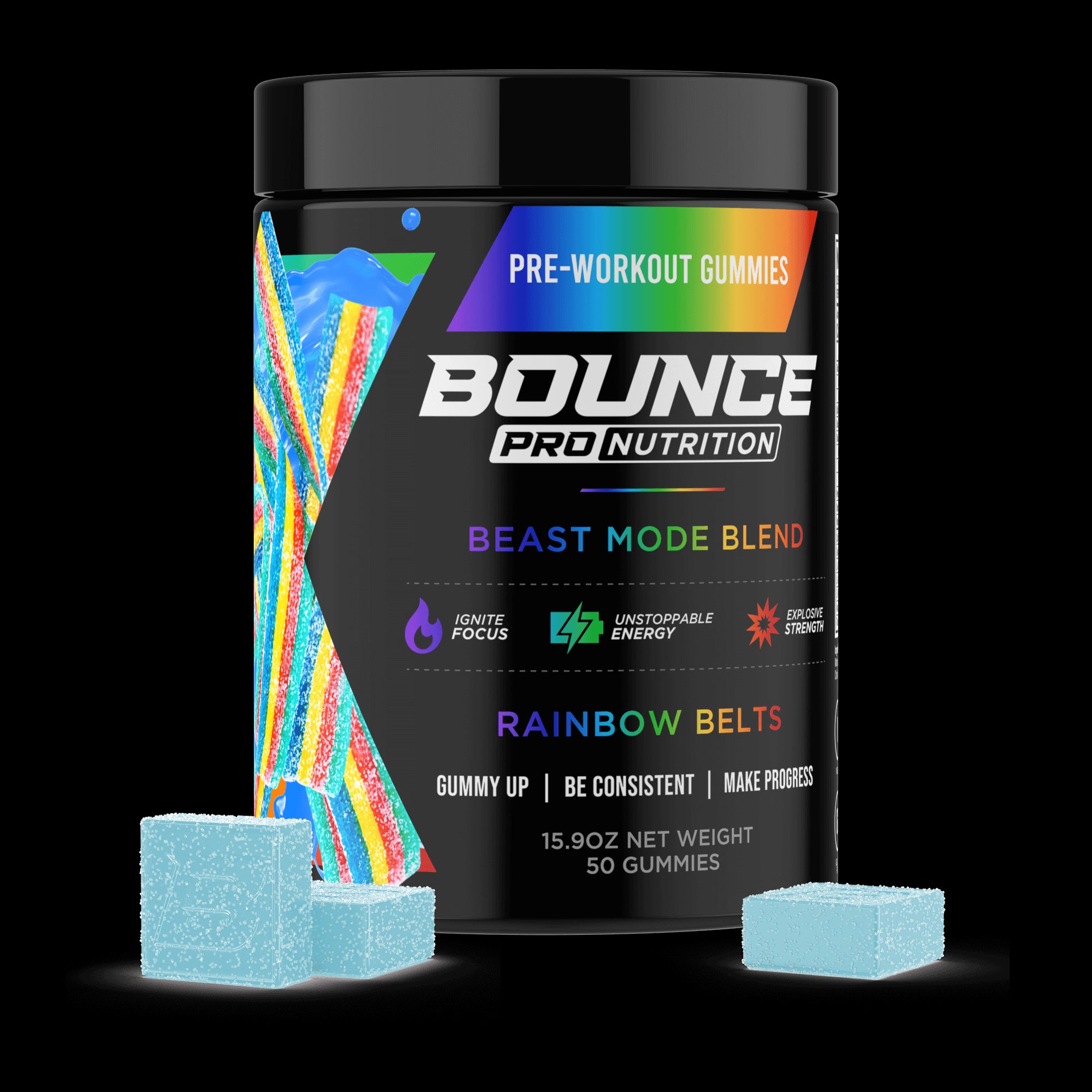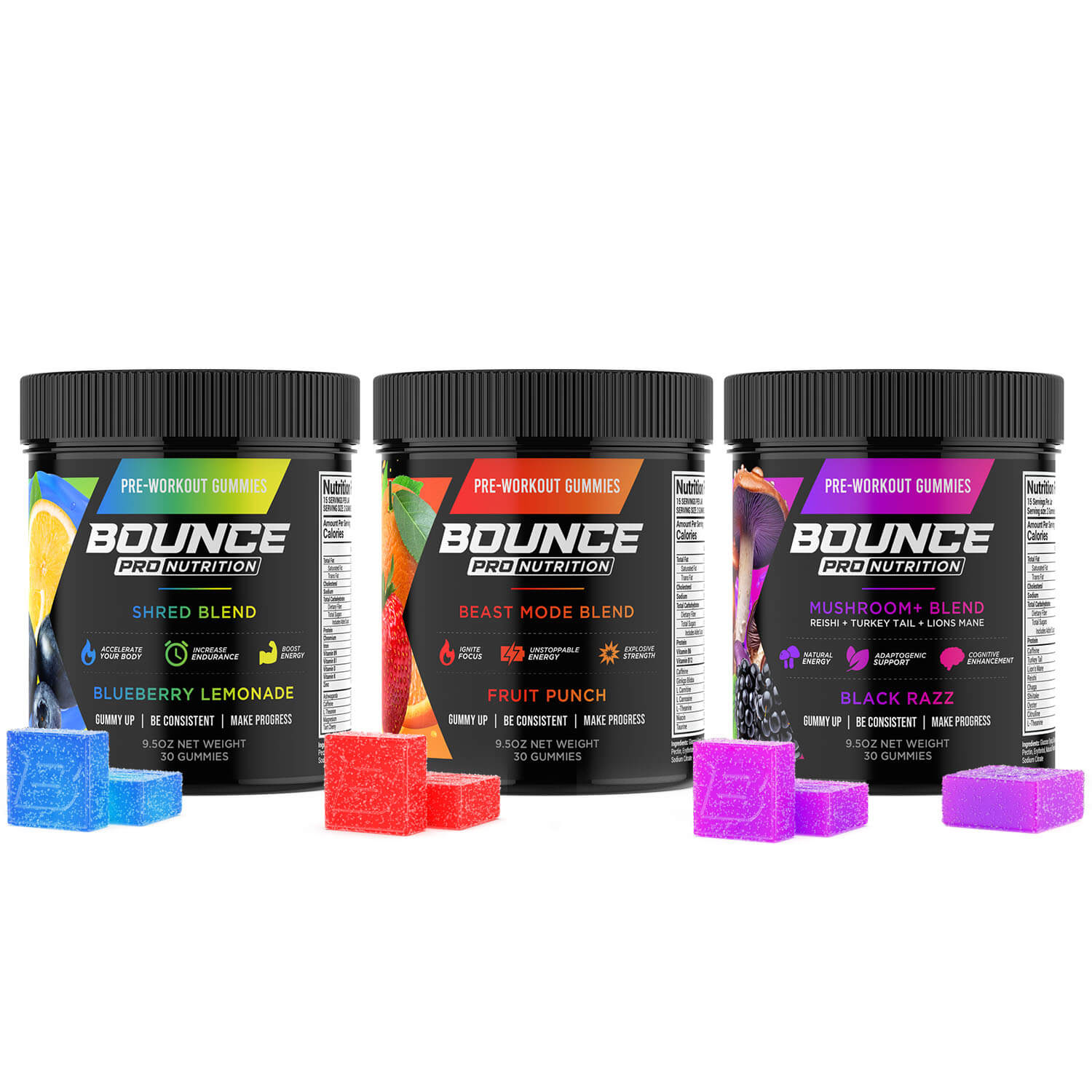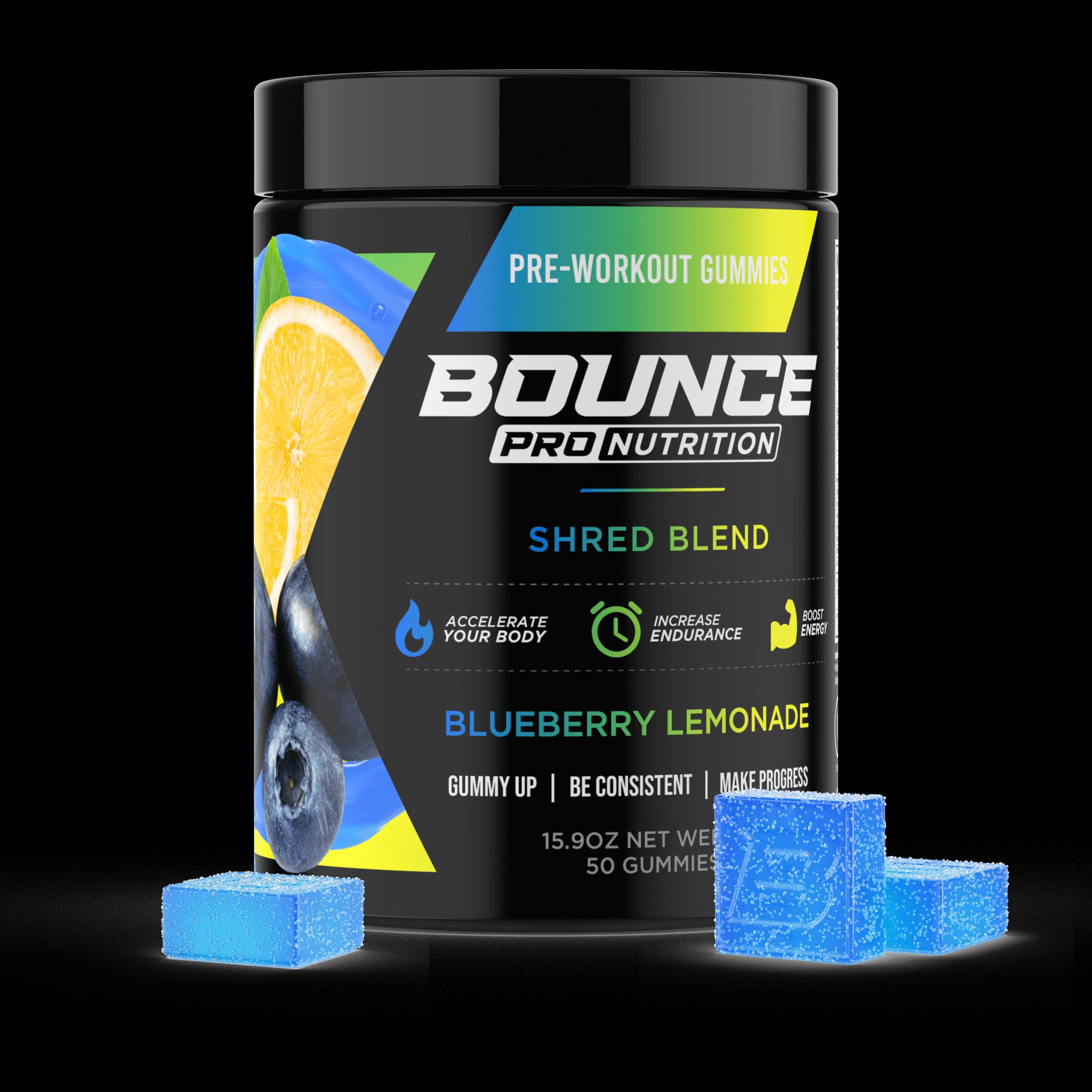There is a powerful and primal magic that happens when you leave the pavement behind and step onto a dirt path, a feeling of returning to something ancient and essential. It is a world where the rhythm of your own footsteps and the steady cadence of your breathing become the dominant soundtrack, replacing the noise and haste of modern life. For the hiker, the trail is both a pathway and a destination, a place of physical challenge, mental clarity, and profound connection with the natural world.
Every hike is a unique journey, a test of preparedness and endurance against the beautiful and indifferent forces of nature. But this journey, whether it's a short afternoon jaunt or a multi-day trek, is powered by a delicate internal engine. The ability to maintain that engine's performance over miles of uneven terrain and changing elevations is the key to a safe and rewarding experience. In this demanding pursuit, the science of personal fueling and hydration is not a minor detail—it is the very foundation upon which every successful adventure is built.
TO BUY ELECTROLYTE GUMMIES CLICK HERE
What is Hiking?
At its most fundamental level, hiking is the act of walking for an extended distance, typically in a natural or wilderness environment on trails or footpaths. It is an activity that bridges the gap between a simple walk in the park and the more technical and demanding sport of mountaineering. Unlike a casual stroll, a hike implies a more purposeful journey with a greater degree of physical challenge, often involving changes in elevation, uneven terrain, and a longer duration.
It is a human-powered endeavor that requires a degree of self-sufficiency and preparedness, as hikers often venture into areas where immediate assistance is not readily available. This blend of physical exertion, natural immersion, and personal responsibility is what defines hiking as a unique and deeply rewarding recreational activity.
Hiking is a unique activity in that it is simultaneously a profound physical workout and a powerful form of mental therapy. From a physical standpoint, it is an excellent full-body, low-impact exercise. It strengthens the major muscle groups of the lower body and core, improves cardiovascular health, and enhances balance and stability due to the constant need to adapt to uneven ground.
Mentally, hiking offers a potent escape from the overstimulation and stress of modern life. The combination of rhythmic physical activity, fresh air, and the serene beauty of a natural landscape has been shown to reduce anxiety, combat symptoms of depression, and improve overall mood and cognitive function. For many, a day on the trail is as much a workout for the soul as it is for the body.
A core ethos that defines the modern hiking community is a deep respect for the natural environment and a commitment to personal preparedness. Responsible hikers adhere to the principles of "Leave No Trace," a set of ethics designed to minimize the human impact on the wilderness. This includes packing out all trash, respecting wildlife, and staying on designated trails. Furthermore, a safe hike is a well-planned hike.
This involves researching the trail, checking the weather forecast, carrying the "Ten Essentials" (a list of key navigation, safety, and first-aid items), and being honest about one's own physical limitations. This culture of self-reliance and environmental stewardship is a fundamental part of what it means to be a hiker.
Why Do Some People Enjoy Hiking in General?
The appeal of hiking is a deep and resonant one, touching upon some of the most fundamental human desires for connection, challenge, and tranquility. For many, the primary draw is the opportunity to disconnect from the frantic, technology-saturated modern world and reconnect with the natural one.
To stand on a mountain summit and gaze out at a vast, uninterrupted landscape, or to walk in the quiet, cathedral-like stillness of an old-growth forest, is to experience a sense of awe and perspective that can be profoundly restorative. It is a chance to be reminded of something larger than oneself and to find a sense of place within the grand tapestry of the natural world. This immersive experience is a powerful antidote to the stresses of daily life.
This connection with nature is often intertwined with a deep sense of personal accomplishment and adventure. A challenging hike is a journey with a clear and tangible goal—be it a waterfall, a scenic overlook, or a mountain peak. The process of overcoming the physical and mental obstacles to reach that goal provides an incredible sense of empowerment and self-efficacy.
It is a direct and honest test of one's own endurance and resilience. Every successfully navigated stream crossing, every steep ascent conquered, and every mile logged contributes to a growing sense of confidence and capability. This feeling of adventure and self-reliance is an addictive and powerful motivator that keeps people returning to the trails time and time again, specifically its:
-
Profound Mental Health Benefits: The therapeutic power of hiking is well-documented. The combination of rhythmic, aerobic exercise and exposure to a natural environment (sometimes called "green exercise") is a potent recipe for improving mental well-being. Hiking has been shown to reduce rumination (a pattern of negative, self-focused thought), decrease stress by lowering cortisol levels, and boost mood through the release of endorphins. The quiet and solitude of the trail provide a space for introspection and mental clarity, making it a form of moving meditation for many.
-
Sense of Adventure and Discovery: Every hike is a small adventure, an opportunity to explore a new place and see what's around the next bend in the trail. This sense of discovery is a powerful draw, appealing to our innate human curiosity. Whether it's discovering a hidden alpine lake, spotting a rare bird, or simply exploring a local park you've never been to before, hiking provides a constant stream of novel experiences that keep the mind engaged and the spirit of adventure alive.
-
Ability to Provide Excellent and Accessible Physical Exercise: Hiking is a fantastic full-body workout that can be easily adapted to almost any fitness level. It strengthens the glutes, quadriceps, hamstrings, and calves, as well as the muscles of the core that are needed for stability on uneven terrain. It is a weight-bearing exercise, which helps to improve bone density. Unlike many other forms of cardio, it is often so enjoyable and engaging that it doesn't "feel" like a workout, making it a highly sustainable and accessible form of physical fitness.
-
Powerful Social Bonding Experience: While hiking can be a wonderful solitary pursuit, it is also an incredible activity to share with others. The shared challenge and the unhurried pace of a hike provide the perfect environment for deep and meaningful conversation, free from the distractions of daily life. Tackling a tough trail with friends, family, or a partner can build trust, create lasting memories, and strengthen bonds in a way that few other activities can. Many hiking clubs and groups exist, providing a great way to meet new, like-minded people.
-
Overall Simplicity and Escape from Modernity: In a world of constant connectivity and overwhelming complexity, hiking offers a return to a beautiful simplicity. On the trail, the concerns are fundamental and immediate: where to place your next step, when to stop for water, which way the path turns. This forced mindfulness and disconnection from the digital world—the emails, the notifications, the endless news cycle—is incredibly refreshing for the human psyche. It is a chance to reset, recharge, and remember the simple joy of putting one foot in front of the other.
What Types of Hikers are There?
The global community of hikers is a diverse and eclectic tribe, a collection of individuals from all walks of life who are united by a shared love for the trail. Just as there are many different types of trails, there are many different types of people who walk them, each with their own unique motivations, styles, and levels of commitment.
To understand this community is to appreciate its incredible breadth, from the casual weekend wanderer to the deeply committed long-distance trekker. These archetypes are not rigid labels but rather fluid descriptions of common approaches to the activity, and many hikers will embody different characteristics at different times in their lives. The following are the most recognizable types of hikers you might encounter on the trail:
-
The Day Hiker: This is the most common and accessible type of hiker. The day hiker embarks on trails that can be completed in a single day, without the need for overnight gear. They carry a small backpack with the essentials for a few hours: water, snacks, a map, and a rain jacket. They are the lifeblood of local and national parks, enjoying the beauty and challenge of the trail before returning to the comfort of their home or car at the end of the day.
-
The Weekend Warrior: The weekend warrior is a dedicated hiker who balances their passion with the demands of a typical work week. Their adventures are packed into Saturdays and Sundays. They are often highly efficient planners, making the most of their limited time to tackle more ambitious day hikes or short, one-night backpacking trips. They live for the weekend and the opportunity to escape the city and hit the trails.
-
The Peak Bagger: This hiker is motivated by a specific and measurable goal: to summit a list of mountains. This could be the 48 peaks over 4,000 feet in New Hampshire, the 14ers (14,000-foot peaks) of Colorado, or the highest point in every state. They are goal-oriented, methodical, and often possess a high level of fitness and mountain sense. For them, the joy is in the challenge and the satisfaction of ticking another peak off their list.
-
The Thru-Hiker: The thru-hiker is an endurance athlete who undertakes the immense challenge of hiking a long-distance trail from end to end in a single season. This includes iconic trails like the Appalachian Trail (2,200 miles) or the Pacific Crest Trail (2,650 miles). Thru-hiking is an all-consuming lifestyle that requires months of dedication, incredible physical and mental resilience, and a deep commitment to the trail community.
-
The Section Hiker: A section hiker is someone who is also completing a long-distance trail, but they do it in smaller segments over the course of several years rather than all at once. This approach allows people with jobs and other commitments to still experience the grandeur and challenge of these epic trails. They are patient, dedicated, and enjoy the process of slowly piecing together a massive and rewarding puzzle.
-
The Ultralight Backpacker: This hiker has turned minimizing their pack weight into a science and an art form. They meticulously weigh every single piece of their gear, from their shelter to their toothbrush, with the goal of carrying as little weight as possible. By reducing their base weight, they can travel faster, cover more ground, and reduce the strain on their bodies. They are often gear experts who are constantly experimenting with the latest and lightest equipment.
-
The "Gear Junkie": The gear junkie loves the equipment of hiking almost as much as the hiking itself. They are always up on the latest trends in backpacks, tents, footwear, and outdoor apparel. They can talk at length about the pros and cons of different fabrics, the denier of a backpack, or the lumen output of a headlamp. While they love being on the trail, a trip to their local outdoor retailer is also a source of immense joy.
-
The Solitude Seeker (Solo Hiker): This hiker is drawn to the trail for the peace, quiet, and introspection that can only be found when hiking alone. They are self-reliant, confident in their navigation skills, and cherish the freedom and meditative quality of a solo journey. For them, the wilderness is a place to disconnect from the social world and reconnect with themselves.
-
The Social Hiker (Group Leader): The stylistic opposite of the solo hiker, the social hiker finds their greatest joy in sharing the trail experience with others. They are often the ones organizing group hikes for their friends or leading trips for a local hiking club. They thrive on the camaraderie of the trail and the shared accomplishment of reaching a destination together. They are often natural leaders who are skilled at managing group dynamics and ensuring everyone has a safe and enjoyable time.
-
The Fair-Weather Hiker: This individual loves the idea of hiking and enjoys being in nature, but only when the conditions are perfect. They are not interested in hiking in the rain, the cold, or the extreme heat. Their hikes are typically planned for sunny, mild days on well-maintained trails. While more hardcore hikers might be dismissive, the fair-weather hiker's approach ensures that their time in nature is always a pleasant and comfortable one.
What Types of Hikes Do People Like to Go On?
The world of hiking offers a virtually limitless menu of experiences, a diverse array of adventures that can be tailored to any fitness level, time commitment, and personal preference. The character of a hike is defined by a combination of factors, including its length, the nature of the terrain, and the environment through which it passes. A hiker can choose to spend a few hours on a gentle local trail or dedicate months of their life to traversing a continent-spanning wilderness path. This incredible variety is one of the sport's greatest strengths, ensuring that there is always a new challenge to undertake and a new landscape to explore.
From a leisurely stroll through an urban park to a grueling ascent of a glaciated peak, every type of hike offers its own unique rewards and requires its own specific set of skills and preparations. Understanding these different categories allows a hiker to make informed choices, to select adventures that align with their abilities and goals, and to properly prepare for the specific demands of the trail ahead. The following sections break down the common types of hikes based on their duration, their environment, and other unique styles of travel on foot.
Based on Duration and Distance
The most fundamental way to categorize a hike is by its length and the time it takes to complete, which determines the amount of gear and logistical planning required:
-
Day Hiking: This is the most common and accessible form of hiking. A day hike is any hike that can be completed in a single day, without the need for an overnight stay. These can range from a short, one-hour walk on a local nature trail to a strenuous, ten-hour trek up and down a major mountain peak. The key defining feature is that the hiker returns to their car or home at the end of the day. This requires only a small daypack with the "Ten Essentials," including water, food, navigation tools, and extra layers of clothing.
-
Backpacking (Overnight/Weekend): Backpacking involves hiking into the wilderness and staying for one or more nights. This requires the hiker to be completely self-sufficient, carrying everything they need to survive and be comfortable on their back. This includes a larger backpack, a tent or other shelter, a sleeping bag and pad, a stove and fuel for cooking, and enough food for the duration of the trip. Backpacking opens up a world of possibilities, allowing hikers to access more remote and wild areas that are unreachable on a day hike.
-
Long-Distance Hiking: This is the most ambitious form of hiking, involving treks that can last for weeks, months, or even years. This category includes thru-hiking, which is the act of hiking a long-distance trail like the Appalachian Trail from end to end in one continuous journey. It also includes section-hiking, where a hiker completes a long trail in smaller segments over a period of many years. This type of hiking is a profound commitment that requires meticulous planning, a high level of physical and mental endurance, and a willingness to embrace a minimalist and nomadic lifestyle.
Based on Terrain and Environment
The character of a hike is dramatically shaped by the landscape and environment it passes through. Each terrain type presents its own unique challenges and rewards:
-
Summit Hiking / Peak Bagging: This type of hiking is focused on the goal of reaching the summit of a mountain. It almost always involves a significant amount of elevation gain and can be very physically demanding. The terrain can range from a well-maintained trail to a rugged, rocky scramble. The reward is the incredible sense of accomplishment and the often breathtaking panoramic views from the top. "Peak bagging" is the practice of systematically climbing all the peaks on a specific list.
-
Urban Hiking: This involves exploring a city or suburban area on foot, often linking together parks, greenways, historical sites, and interesting neighborhoods. It's a great way to discover the hidden corners of one's own city and to get in a good walk without having to travel far. It requires a different kind of awareness, focused on navigating city streets and traffic rather than natural obstacles.
-
Winter Hiking: Hiking in the winter transforms a familiar trail into a completely new and challenging environment. It requires specialized gear, including insulated and waterproof boots, snowshoes or microspikes for traction, and an extensive layering system of clothing to manage body temperature. It also demands a higher level of safety awareness due to the risks of avalanches, hypothermia, and rapidly changing weather. The reward is the stunning, serene beauty of a snow-covered landscape.
-
Desert Hiking: Hiking in arid desert environments presents the unique challenges of extreme heat, intense sun exposure, and a scarcity of water. A desert hiker must be meticulous about their hydration and sun protection, often hiking in the very early morning or evening hours to avoid the peak heat of the day. The landscape is often starkly beautiful, with unique rock formations, canyons, and resilient flora and fauna.
-
Glacier Hiking: This is a more technical and dangerous form of hiking that involves walking on glaciers. It requires specialized equipment, including crampons (spikes that attach to boots), an ice axe, and ropes. It also requires specific knowledge of how to travel safely on a glacier, including how to identify and navigate crevasses (deep cracks in the ice). This is typically done with an experienced guide or as part of a mountaineering expedition.
Other Types of Hiking
Beyond duration and terrain, there are other styles of hiking that are defined by their unique approach or purpose:
-
Bushwhacking (Off-trail Hiking): This is the adventurous practice of hiking through the wilderness without a designated trail. It requires advanced navigation skills using a map and compass, as well as the ability to move efficiently through dense brush, over downed trees, and across challenging terrain. It offers the ultimate sense of solitude and exploration but also carries a much higher level of risk and requires a great deal of experience.
-
Hiking with Dogs: For many dog owners, one of the greatest joys of hiking is sharing the experience with their four-legged companion. This requires extra planning, including choosing dog-friendly trails, carrying extra water and food for the dog, and being prepared to manage their safety and waste in accordance with trail regulations and Leave No Trace principles.
-
Fastpacking: Fastpacking is a hybrid activity that blends ultralight backpacking with trail running. The goal is to cover long distances quickly by carrying a minimalist, lightweight pack. A fastpacker will typically run the flat and downhill sections of a trail and power-hike the uphills. This allows them to cover the distance of a traditional multi-day backpacking trip in a much shorter amount of time.
-
Solo Hiking: A solo hiker chooses to venture out on the trail by themselves. This offers an unparalleled opportunity for solitude, introspection, and self-reliance. It also requires a higher level of preparedness and safety awareness, as the hiker must be completely dependent on their own skills and judgment.
-
Group Hiking: This involves hiking with a partner or a larger group, such as friends, family, or a hiking club. It offers the benefits of shared experience, camaraderie, and increased safety. A successful group hike requires good communication, a pace that is comfortable for the slowest member, and a shared understanding of the day's plan.
Why Staying Hydrated is Imperative for a Hiker
For a hiker venturing into the wilderness, proper hydration is not a matter of mere comfort or optimizing performance; it is the absolute cornerstone of safety and survival. The very act of hiking, which involves sustained physical exertion over many hours, often while carrying a pack and navigating challenging terrain, generates a significant amount of internal heat and leads to substantial fluid loss through sweat.
This is true even on a cool day. When this fluid and the essential electrolytes contained within it are not diligently replaced, a hiker can quickly slip into a state of dehydration. This triggers a dangerous cascade of physiological impairments that can affect everything from their physical strength to their cognitive ability to make safe decisions. In the backcountry, where you’re your own first responder, a lapse in hydration can be the first step towards a serious or even life-threatening situation, specifically as it pertains to:
-
Preventing Potentially Deadly Heat-Related Illnesses: This is the most critical reason for a hiker to stay hydrated, especially during the summer. As the body heats up from physical exertion, its primary cooling mechanism is the evaporation of sweat. Dehydration severely compromises this system. As fluid levels drop, the body reduces its sweat rate to conserve water, which can lead to a dangerous spike in core body temperature. This can progress from the early stages of heat exhaustion (symptoms include heavy sweating, weakness, dizziness, and nausea) to a full-blown heatstroke, a life-threatening medical emergency where the body's internal temperature regulation system completely fails.
-
Maintaining Physical Endurance and Strength: A hike, particularly one with significant elevation gain, is an endurance event. A hiker's muscles require a state of optimal hydration to function at their peak. Dehydration reduces blood volume, which means less oxygen-rich blood is delivered to the working muscles in the legs, core, and back. This results in a rapid onset of fatigue, a noticeable decrease in strength, and a feeling that the pack is getting heavier with every step. A properly hydrated hiker can maintain their strength and stamina for a much longer period, making the hike safer and more enjoyable.
-
Enhancing Cognitive Function for Safe Navigation: A hiker's most important piece of gear is their brain. Safe travel in the wilderness requires constant focus, clear decision-making, and good judgment. The brain is extremely sensitive to fluid loss. Even mild dehydration can impair cognitive function, leading to confusion, irritability, and a reduced ability to concentrate on tasks like reading a map or following a trail. A simple navigational error caused by a dehydrated brain can have serious consequences, potentially leading to becoming lost.
-
Reducing the Risk of Debilitating Muscle Cramps: The sustained, repetitive work of hiking places a huge demand on the muscles. This, combined with the loss of key electrolytes like sodium, potassium, and magnesium through sweat, creates the perfect conditions for painful muscle cramps. A sudden, debilitating cramp in a calf or hamstring while navigating a steep or technical section of trail can be dangerous, potentially leading to a slip or a fall. Maintaining proper fluid and electrolyte balance is a hiker's best defense against these painful and performance-ending spasms.
-
Helping to Prevent Altitude Sickness: For hikers who are ascending to high altitudes (typically above 8,000 feet), proper hydration is a key factor in preventing Acute Mountain Sickness (AMS). The symptoms of AMS, which include headache, nausea, and fatigue, are often exacerbated by the diuretic effect of high altitude, which can cause the body to lose fluid more rapidly. Staying well-hydrated is one of the most important preventative measures a hiker can take to help their body acclimatize to the thinner air more effectively.
-
Supporting Joint and Muscle Health: Water is a key component of the synovial fluid that lubricates our joints and the fascia that encases our muscles. When dehydrated, these tissues can become less pliable and more susceptible to the strains, sprains, and overuse injuries that are common in hiking. Maintaining good hydration helps to keep the entire musculoskeletal system functioning smoothly, reducing the risk of injury and minimizing the aches and pains that can result from a long day on the trail.
Why Do Some Hikers Also Use Supplements?
The ethos of hiking is one of simplicity and self-reliance, and for many, the ideal trail nutrition consists of simple, whole foods. However, as hikers tackle longer and more demanding objectives, the principles of modern sports nutrition become increasingly relevant and valuable.
A multi-day backpacking trip or a strenuous, all-day mountain ascent places immense demands on the body, creating specific nutritional needs that can be difficult to meet with traditional trail food alone, especially when pack weight is a major concern. It is to address these specific challenges that many serious hikers strategically incorporate dietary supplements into their kit. These are not seen as a replacement for good food, but as lightweight, efficient, and highly targeted tools to optimize energy, accelerate recovery, and maintain physiological balance in the demanding backcountry environment:
-
Aiding in Hydration and Electrolyte Balance: This is the most common and critical use of supplements for hikers. As established, a hiker can lose a tremendous amount of fluid and electrolytes through sweat. Simply drinking plain water from a stream (after filtering it) is often not enough to replace the crucial sodium and other minerals that have been lost. Electrolyte supplements, in the form of powders, tablets, or gummies, are a lightweight and highly effective way to add these essential minerals back into the water, dramatically improving the body's ability to absorb and retain fluid and helping to prevent the debilitating effects of dehydration and cramping.
-
Sustaining Energy on Long and Strenuous Hikes: A long day of hiking can burn thousands of calories, and it can be difficult to consume enough bulky food to keep up with this energy expenditure. This is where calorie-dense and easily digestible supplements become invaluable. Energy gels and chews provide a concentrated and rapid source of carbohydrates that can be consumed quickly on the trail without the need to stop for a long break. They are a lightweight and efficient way to prevent "bonking" and to maintain a high energy level throughout a long day.
-
Accelerating Post-Hike and On-Trail Recovery: A hard day of hiking creates significant muscle damage. To speed up the repair process, especially on a multi-day backpacking trip where you have to get up and do it all again the next day, recovery-focused supplements are key. Many backpackers will carry a lightweight protein powder to mix with water immediately after reaching camp. This provides the amino acids needed to kickstart muscle protein synthesis and can significantly reduce muscle soreness, helping them to feel stronger and more recovered for the next day's miles.
-
The Critical Importance of Convenience and Weight Savings: For any backpacker or thru-hiker, every single ounce in their pack matters. Supplements are often far more weight- and space-efficient than their whole-food counterparts. A small bag of electrolyte powder or a few lightweight gel packets can provide the same nutritional benefit as much heavier and bulkier food items. This convenience and weight savings allow a hiker to travel lighter and more efficiently, which reduces the overall physical strain on their body.
-
Supporting Joint Health Under a Heavy Load: Carrying a heavy backpack for days on end places a significant amount of stress on the joints, particularly the knees and ankles. To support the long-term health of their cartilage and connective tissues, many long-distance hikers will use supplements like glucosamine, chondroitin, and collagen. Omega-3 fatty acids are also popular for their anti-inflammatory properties, which can help to manage the chronic aches and pains that are a common reality of a long trek.
-
Preventing Nutrient Deficiencies on Long-Distance Trails: A thru-hiker's diet is often limited by what is lightweight, non-perishable, and available in small trail towns. This can lead to a diet that is high in processed carbohydrates and low in fresh fruits and vegetables, which can result in micronutrient deficiencies over time. For this reason, many thru-hikers will carry a high-quality multivitamin to act as a form of "nutritional insurance," ensuring they are getting the essential vitamins and minerals needed to support their immune system and overall health.
-
Boosting the Immune System: The combination of intense physical stress, sleep deprivation, and exposure to the elements can take a toll on a hiker's immune system, making them more susceptible to illness. Getting sick in the backcountry can be a serious issue. Many hikers will supplement with things like Vitamin C and Zinc to provide extra support to their immune system and help them stay healthy throughout a long trip.
-
Pre-Hike Energy for an Alpine Start: For hikers tackling a very long day or a summit attempt, an "alpine start" (starting in the pre-dawn hours) is often necessary. To get going on a cold, dark morning, some hikers will use a supplement containing caffeine, either in the form of a pill, a caffeinated drink mix, or a caffeinated energy gel, to provide a boost of alertness and energy for the initial push.
-
Reducing Muscle Soreness: To combat the inevitable delayed onset muscle soreness (DOMS) that comes with a long, hard hike, especially one with a lot of downhill, some hikers will use supplements known for their anti-inflammatory properties. Tart cherry extract is a popular choice that has been shown in some studies to help reduce muscle damage and soreness.
-
Improving Sleep Quality on the Trail: Getting a good night's sleep in a tent after a grueling day can be difficult. Some backpackers will use supplements like magnesium or melatonin to help them relax, fall asleep faster, and improve the quality of their sleep. A good night's sleep is the most powerful recovery tool a hiker has, and anything that supports it is incredibly valuable for multi-day trips.
What are Electrolyte Gummies?
In the world of outdoor recreation and endurance sports, where efficient and lightweight nutrition is paramount, electrolyte gummies have emerged as a brilliantly simple and highly effective solution to the critical challenge of on-the-trail fueling and hydration. They represent a significant and welcome innovation for the modern hiker, offering a convenient, palatable, and mess-free alternative to the traditional options of sticky gels and powders that require careful mixing.
These small, chewable supplements are scientifically formulated by nutritionists to deliver a concentrated and easily absorbable dose of the two most critical components for a hiker's performance and safety: essential minerals known as electrolytes, and in most cases, quick-digesting carbohydrates for sustained energy. Their entire design philosophy is centered around rapid digestion, portability, and supreme ease of use, enabling a hiker to quickly refuel at a scenic overlook or during a brief water break without ever having to take off their pack.
To fully comprehend the immense value that electrolyte gummies offer a hiker, one must first have a solid understanding of what electrolytes are and the mission-critical role they play in the body during a long, strenuous day on the trail. You see folks, electrolytes are not complex, synthetic compounds; they are essential minerals, such as sodium (Na+), potassium (K+), magnesium (Mg2+), and calcium (Ca2+), that’re vital for human life and are naturally found in our food.
When these minerals are dissolved in the body's fluids, like blood or sweat, they carry a small but vital electric charge. This electrical capability is the very foundation of our nervous system and the entire process of muscle function. Every single nerve impulse that travels from your brain to your leg, commanding it to step up onto a rock, is a complex electrical event mediated by the lightning-fast exchange of sodium and potassium ions across the nerve cell membrane.
Following that signal, calcium ions rush into the muscle cell to trigger the physical contraction of the muscle fiber, and magnesium then plays a key role in helping that fiber to relax for the next step. When a hiker sweats for hours while climbing a mountain, they lose these vital minerals, and if they are not systematically replaced, this entire elegant system of communication and contraction begins to fail.
The process of creating a shelf-stable, effective, and tasty electrolyte gummy is a sophisticated endeavor that perfectly merges the disciplines of food science with the precision of sports nutrition. It is a carefully controlled industrial process designed with the specific goal of ensuring that every single gummy a hiker consumes delivers a consistent and reliable nutritional payload.
High-quality manufacturers often employ specific techniques, such as using low heat during the cooking process, with the intention of preserving the potency and integrity of the delicate vitamins and other ingredients, ensuring the hiker gets the maximum benefit from what they are consuming. The journey from a collection of raw powders to the finished, chewable product that a hiker can easily carry in their hip belt pocket generally follows a well-established, multi-stage pathway:
-
Scientific Formulation and Raw Ingredient Compounding: The entire process originates not on a production line, but in a laboratory where food scientists and sports nutritionists design the gummy's specific formula. They carefully select and precisely weigh all the raw ingredients. This includes the mineral salts that will provide the electrolytes (e.g., sodium citrate, potassium chloride), the specific carbohydrate sources that will provide fast energy (often a strategic blend of glucose and fructose to utilize multiple absorption pathways in the gut), and the gelling agent, which is typically plant-based pectin for vegan-friendly products or traditional animal-based gelatin. Other minor ingredients like citric acid (for tartness and preservation) and carefully selected natural flavors and colors are also added to the pre-mix.
-
Industrial Cooking of the Gummy Slurry: The precisely weighed and compounded ingredients are then transferred into a massive, jacketed industrial kettle for the cooking process. Inside this cooker, the mixture is heated to a very specific temperature for a set amount of time. This critical step serves to fully dissolve all the solid ingredients into the liquid base, creating a perfectly uniform and viscous liquid known as a slurry. This cooking process is meticulously controlled by computers and experienced technicians to achieve the exact moisture content and solid-to-liquid ratio (a measure known as Brix) that is required for the electrolyte gummy to have its desired final texture and chewiness.
-
Precision Depositing of the Slurry into Molds: Once the slurry has been cooked to the exact specifications, it is then piped from the large cooker to a complex piece of machinery called a depositor. This machine functions like a series of hundreds of computer-controlled, precise nozzles that work in perfect unison to inject the hot liquid gummy mixture into thousands of individual molds. These molds are often made of flexible, food-grade silicone or, in more traditional and larger-scale methods, are impressions that have been machine-stamped into large trays that are filled with fine, food-grade corn starch.
-
Controlled Curing and Setting of the Gummies: After being filled, the trays of molds are then carefully moved into long, climate-controlled rooms or tunnels. They remain in this controlled environment for an extended period, which can range from 24 to as long as 72 hours, in a process known as curing or stoving. During this crucial resting phase, the gelling agent (pectin or gelatin) fully sets up, and a specific amount of excess moisture is allowed to evaporate from the electrolyte gummies. This is the step that allows them to firm up and achieve their final, stable, and characteristic chewy texture.
-
Demolding and Finishing Touches: After the curing process is complete, the gummies are ready to be removed from their molds. They are then often passed through a large, slowly rotating tumbling drum. Inside this drum, they are very lightly coated with a food-grade, edible wax (like carnauba wax) or a light oil. This finishing step serves the practical purpose of preventing the finished gummies from sticking together in the final packaging and gives them a pleasant, shiny appearance. In some cases, for added flavor and texture, they might be coated in a sweet or sour sugar-acid crystal mixture.
-
Rigorous Quality Control and Final Packaging: Before a single gummy can be sent to a hiker, the finished product must undergo a battery of rigorous quality control tests. Samples from every single batch produced are sent to a laboratory where they are analyzed using scientific methods to verify that the electrolyte and carbohydrate content precisely matches the claims made on the product's label. They are also tested for texture, flavor, appearance, and for any potential microbial contamination to ensure consumer safety. Once a batch has passed all of these stringent inspections, the gummies are then sent to automated machines that weigh and seal them into their final packaging.
The consumer market for electrolyte gummies has expanded and diversified at an incredible pace, giving rise to a wide array of different products, each tailored to the specific needs of different types of hikers and outdoor enthusiasts. The most critical variation between these products lies in the specific electrolyte profile of the gummy.
Some formulations are intentionally made to be very high in sodium, designed specifically for hikers who will be out for many hours in hot, humid conditions where sweat losses are extreme. Other formulas might have a more balanced profile or a higher relative concentration of minerals like magnesium, which is crucial for preventing muscle cramps during long ascents and descents.
Beyond the core mineral content, many brands now offer enhanced or "plus" versions that include additional functional ingredients. Caffeinated gummies are extremely popular among hikers for providing a welcome mental and physical boost, especially for an early "alpine start" or to combat fatigue late in a long day. Gummies fortified with other ingredients like B-vitamins are also common to support the body's natural energy production systems.
The intended physiological effects of electrolyte gummies are designed to directly and efficiently address the primary factors that cause a hiker's physical and mental performance to decline during a long day on the trail. The core components—the electrolytes, the simple carbohydrates, and the water consumed alongside them—work in a powerful synergy to support the hiker's internal environment.
When a hiker consumes a gummy and drinks water, the combination of sodium and glucose in the gummy activates a co-transport mechanism in the small intestine called the SGLT1 transporter. This dramatically accelerates the rate at which fluid is absorbed from the gut into the bloodstream, helping the hiker to hydrate more effectively and maintain their blood plasma volume.
The direct replenishment of the electrolytes lost in sweat supports the maintenance of the electrochemical balance required for proper nerve signaling and the mechanics of muscle contraction, helping to prevent cramps and maintain strength. The simple sugars are absorbed very quickly, providing a rapid source of fuel to the muscles and the brain, which helps to keep blood sugar stable and maintain both physical energy and mental focus for safe navigation.
What Hikers Need to Know About Taking Electrolyte Gummies
For any hiker, from the casual day-tripper to the seasoned thru-hiker, the decision to carry and use electrolyte gummies should be a thoughtful and well-informed one. It requires understanding that these are not just a lightweight candy, but a piece of functional gear for your internal physiology, just as important as your map or your rain jacket.
Their effectiveness is maximized when they are used as part of a comprehensive and proactive strategy for managing the unique physical stresses of a long hike. A hiker must understand that the primary role of these gummies is to help maintain the delicate fluid and mineral balance that is so easily and dangerously disrupted by heavy sweating and prolonged physical exertion in the backcountry. Using them effectively is a proactive step towards preventing dehydration, reducing the risk of injury, and ensuring a safe and successful adventure.
The most crucial concept for a hiker to grasp is that thirst is a poor indicator of hydration status. By the time you feel thirsty on the trail, you are already in a state of mild dehydration, and your physical and cognitive performance has likely already begun to decline. This is why a proactive, time-based approach to hydration and fueling is so critical. Electrolyte gummies are the perfect tool for this strategy.
By making it a habit to consume them at regular intervals (e.g., once an hour), you are not just consuming electrolytes; you are also creating a consistent reminder to drink water. This one-two punch of mineral replenishment and enhanced fluid absorption is a powerful strategy for preventing the onset of dehydration and its dangerous consequences.
Finally, while electrolyte gummies are a safe and effective tool for the vast majority of healthy individuals, it is always a wise practice for a hiker to be an informed consumer and to listen to their own body. It is important to read the label to understand the ingredients and the specific electrolyte profile to ensure it aligns with your needs.
For hikers with pre-existing health conditions, particularly high blood pressure or kidney disease, it is highly recommended to consult with a doctor before starting any new supplement regimen, as their electrolyte and fluid intake needs may be different. For the overwhelming majority of hikers, however, these gummies can be a safe, practical, and highly effective tool for managing the daily physiological demands of the trail, helping them to explore farther, climb higher, and return home safely.
10 Tips & Strategies for Taking Electrolyte Gummies
To truly leverage electrolyte gummies as a strategic advantage on the trail, it is necessary to move beyond simply having them in your pack and adopt a more precise, scenario-based approach. The significant difference between finishing a long hike feeling strong and struggling through the final miles often comes down to the small but crucial details of nutrient timing and proactive hydration.
The following tips below are designed to provide a practical framework for hikers of all levels who are looking to intelligently incorporate these convenient fuel sources into their adventures, helping them to maximize their endurance, sharpen their focus, and get the most out of every single mile:
-
Embrace Proactive Hydration: Start Before the Trailhead: The best way to combat dehydration on the trail is to ensure you are fully hydrated before you even take your first step. Your on-trail hydration strategy should begin at home. About an hour before you start your hike, "preload" your system by consuming one or two electrolyte gummies with a large glass (16 oz) of water. This ensures your body starts the hike in a state of optimal hydration, with its electrolyte stores topped off, giving you a crucial buffer against the fluid loss that is to come.
-
Fuel by the Clock, Not by Thirst or Hunger: On a long hike, it's easy to get lost in the rhythm and the scenery and forget to eat or drink. As we've established, waiting until you feel thirsty or hungry is waiting too long. A much more effective strategy is to fuel by the clock. Set a recurring alarm on your watch or phone to go off every 45-60 minutes. When the alarm goes off, it's your non-negotiable cue to stop for a moment, eat one or two gummies, and take several big gulps of water. This creates a consistent and reliable stream of energy and electrolytes to your system.
-
The Perfect Summit (or Overlook) Snack: Reaching a scenic overlook or a mountain summit is a natural and rewarding time to take a break. It's also a perfect opportunity to refuel. Electrolyte gummies are an ideal snack for these moments because they are light, easily digestible, and provide exactly what your body needs after a hard climb—quick energy to replenish what you've burned and electrolytes to replace what you've lost in sweat. This will help you feel strong for the descent, which can be just as demanding as the climb.
-
Pair with Water from Your Bladder or Bottle—Always: This is a fundamental rule for the effective use of these gummies on the trail. They are a concentrated source of solutes and they require water to be properly absorbed and to aid in hydration. Taking them without fluid can make your mouth feel sticky and can even draw water into your gut to aid digestion, which is counterproductive. Every time you eat a gummy, make it a firm rule to immediately follow it with a good amount of water from your hydration reservoir or water bottle.
-
Beating the Heat on Exposed Trails: On those hot, humid summer days, especially when you are hiking on a trail with little tree cover, your sweat rate will be incredibly high. On these days, you need a more aggressive and frequent fueling strategy. Instead of waiting for a full hour, you might need to take a gummy every 30-45 minutes. On a particularly grueling day, like a long hike in the White Mountains or even a strenuous trek in the Blue Hills Reservation on a July Tuesday, this more frequent intake is essential to keep up with your massive fluid and electrolyte losses and to prevent the onset of heat exhaustion.
-
Practice Your Fueling Strategy on Shorter Hikes: Don't wait for a big, multi-day backpacking trip to figure out your on-trail nutrition strategy. Use your regular, shorter day hikes as your laboratory. This is the time to experiment with different brands, flavors, and intake schedules to see how your body and your gut respond to fueling while on the move. This practice will help you dial in a reliable and personalized plan that you can execute with confidence when you are on a more remote or challenging adventure.
-
Keep Them Accessible in a Hip Belt Pocket: The best fueling plan is the one you can actually follow with ease. To ensure you stick to your timed schedule, keep your electrolyte gummies in the most accessible place possible—your backpack's hip belt pocket. This allows you to grab and eat a gummy without having to stop and take off your pack. This simple logistical step dramatically reduces the "friction" of on-the-trail fueling and makes it far more likely that you will stay on top of your nutritional needs.
-
The Post-Hike Recovery Kickstart: The work isn't over when you get back to the car. The hour after your hike is a critical window for recovery. Your body is primed to absorb nutrients to repair muscle and replenish energy stores. Having two or three electrolyte gummies with a large bottle of water as soon as you finish is an excellent way to immediately kickstart this recovery process. It gets some much-needed carbohydrates and electrolytes back into your system, bridging the gap until you can have a proper, well-balanced meal.
-
Check the Weather and Pack Accordingly: Your hydration and fueling needs are directly tied to the weather. Before every hike, check the forecast for the temperature, humidity, and sun exposure you are likely to face. If it's going to be a hot and humid day, pack more electrolyte gummies and more water than you think you will need. It is always far better to end a hike with extra supplies than to run out when you are miles from the trailhead.
-
Listen to Your Body's Cues and Adapt: Even with a perfect plan, your body is the ultimate guide. Learn to recognize the early signs of dehydration and low energy—a slight headache, feeling irritable or dizzy, a loss of appetite, or the onset of muscle tightness. If you start to feel any of these symptoms, don't wait for your next scheduled fueling stop. Take a break in the shade immediately, eat a gummy, and drink some water. A smart hiker is an adaptable hiker who listens to their body's feedback.
Dosing with Bounce Electrolyte Gummies: The Hiker's Trail Guide
For the hiker, a precise and practical fueling and hydration strategy is a critical component of safety and enjoyment on the trail. The plan must be adaptable to the specific demands of the hike, the weather conditions, and the individual's own physiology. That’s where Bounce Electrolyte Gummies meet you on your path.
The delicious Blueberry Splash and Pina Colada flavors provide a welcome and refreshing break from plain water and typical trail snacks, making it easier to stick to a life-saving hydration plan. Also, because Bounce gummies are formulated for high absorption and are made with a low-heat process to preserve nutrient potency, hikers can be confident they are carrying an effective, reliable, and lightweight tool to keep them safe, energized, and moving strong on the trail.
Now, the chart below provides a practical guide for dosing with Bounce Electrolyte Gummies, specifically tailored to the unique and often demanding environment of the trail. This guide leverages the potent formula of Bounce—featuring 450mg Sodium, 300mg Potassium, 180mg Vitamin C, and 75mg Magnesium—to support optimal hydration, sustained energy, and crucial cramp prevention.
|
Hiker's Scenario |
Hike Duration / Intensity |
Environmental Conditions |
Primary Goal |
Recommended Bounce Gummy Dosing & Strategy |
|---|---|---|---|---|
|
Short Nature Walk |
< 2 hours / Low |
Cool to Moderate |
General Hydration |
2 Gummies post-hike with water. |
|
Moderate Day Hike |
2-4 hours / Moderate |
Warm |
Maintain Energy & Focus |
3-4 Gummies total. (1-2 before, 2 during the hike). |
|
Strenuous Mountain Hike (e.g., Peak Bagging) |
5-8+ hours / High |
Hot & Humid |
Prevent Dehydration & Cramps |
Up to 6+ Gummies for the day. (2 before, and 2 every 2 hours on the trail). CRITICAL. |
|
Weekend Backpacking Trip (Per Day) |
All Day / Moderate |
Variable |
Sustained Energy & Recovery |
4-6 Gummies per day. (Spaced out every 2-3 hours during hiking). |
|
Long-Distance Thru-Hiking (Daily Average) |
All Day / High Volume |
All Conditions |
Lightweight, Efficient Fueling |
6+ Gummies per day, integrated with other foods, to maintain electrolyte balance. |
|
Post-Hike Recovery |
All Scenarios |
After Hike |
Rehydrate & Replenish Glycogen |
2-3 Gummies with a large bottle of water immediately upon returning to the trailhead. |
The View from the Summit
In the end, the path of a hiker is a journey toward a destination, but the true reward is found in the journey itself. It is a pursuit that strips away the non-essential and connects us to the fundamental rhythms of the earth and our own bodies. The choices we make before and during a hike—the gear we pack, the route we choose, and the fuel we consume—are what determine the quality and safety of that journey.
A tool like an electrolyte gummy is not a replacement for the stunning view from a summit, but it is a critical component that helps to ensure you have the strength and clarity of mind to safely reach it and fully appreciate it. It is the small, intelligent decision made at the base of a climb that allows the body to perform its best, transforming a struggle into a triumphant ascent.
By mastering the internal landscape of our own physiology, we give ourselves the freedom to more fully and safely explore the magnificent external landscapes of the wild.



